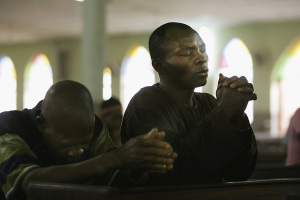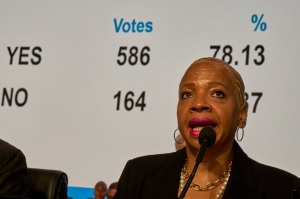Deaf Bible Society Takes the Gospel of Jesus Christ to Deaf Communities Manipulated by ISIS

The Deaf Bible Society has started a movement to bring the story of Jesus in sign language to the deaf community in the Middle East for the first time ever as a way to combat the Islamic State terrorist organization's efforts to recruit the overlooked deaf populations with promises of a "false hope."
As only 20 of the world's 400 sign languages have some form of Bible content available, there is not one sign language in the Middle East that has Bible content available to let those in the region who are deaf know that there is hope that can be found in the Savior Jesus Christ.
Deaf communities are often overlooked in the Middle East, they become susceptible to fall for the sense of empowerment promised to them by IS, a terrorist group that has become renowned for the lies it uses to recruit disenfranchised members of society.
When IS released a recruitment video in March that aimed to lure deaf people to join the jihadi movement, DBS felt the urge to begin a Bible translation process for sign language in the Middle East as a way to counteract IS' recruitment of the deaf community.
"A lot of deaf communities have really been put down by their societies, so they see something like the IS video and say, 'Wow, a regime that is actually going to give us something, give us a place, give us stature, give us empowerment.' But, it is a false empowerment. It is a temporary empowerment. It's temporary hope, and even then it is not true hope," DBS President J.R. Bucklew said in an interview with The Christian Post.
"So, we have to provide them a resource that they can look at. It's not my words. It's not your words. It's just God's words, so that they can gauge and say what is true hope. Not only hope for today, but hope for eternity."
Although DBS launched a project designed to finally introduce deaf Middle Easterners to the story of how Jesus died for the sins of man, there are quite a few obstacles that stand in the way.
Bucklew said that one of the biggest challenges that DBS and its partnering companies have faced in starting the translation process is finding indigenous deaf people in the region who are willing to be a part of the Bible sign language translation process.
In order to rally indigenous deaf believers, DBS is producing a two-hour video that highlights the story of Jesus in sign language, which aims to gather deaf believers to contribute to the process.
The video is expected to be completed and ready to distribute via microSD cards by the end of 2015, Bucklew explained.
"The video will be the icebreaker and the engagement tool that we and our other partners on-ground, in-country need to reach deaf people," Bucklew explained. "So, once we are able to distribute, we are working with partners for some intentional evangelistic movement among the sign language in the Middle East, and church planting, and working with the deaf, and engaging the deaf, and then, we will be able to draw out sort of an indigenous team."
"Right now, the issue is that I can't just walk in and say, 'Hey, are you a Christian?' They are not going to say 'Yeah, I am,'" Bucklew continued. "But if I show them a video, and they identify with that video, they can say, 'Hey, you must also identify with that video. By the way, I believe in that.' So, we are able to build a team of indigenous deaf people who can then carry on a Bible translation project."
Once a team of indigenous speakers has been established, Bucklew says it could take anywhere from three to five years until a foundational sign language Bible is ready to be released.
"We are working on other models, newer models, some experimenting with methodology and technology to say 'Can we reduce the time, reduce the costs, but increase content?' What will it take for us to do that?" Bucklew asked.
"Our goal would be that once this tool gets out ... that we will then be able to recruit a translation team, who after three years or so, will have significant Bible translation content to support these churches that have been planted in this evangelistic movement."
Bucklew explained that although there are various text translations of the Bible available, the World Federation of the Deaf estimates that about 95 percent of the world's deaf population is functionally illiterate.
"We built the text based on the spoken language, based on sound. So, even for the deaf that learn to read, it's mostly just memorizing symbols that represent a sound that they have no way to identify with," Bucklew said. "Then they are just matching symbols with things that are tangible in front of them. The spoken language in a text form is always a second language to them. They are not able to identify with them as you would a sign language."




























